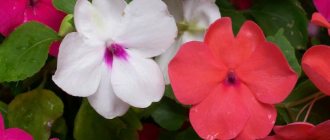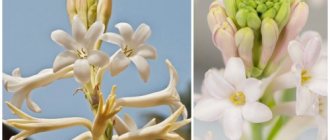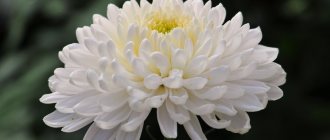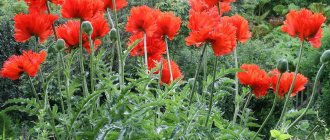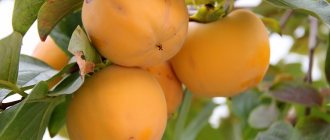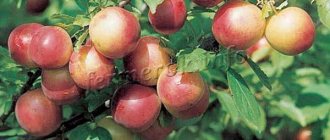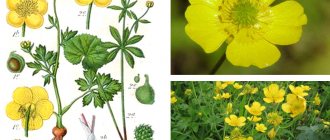Garden balsam - what kind of flower is it, what family does it belong to?
The Latin name of the flower is Impatiens, which means “touchless.” The fact is that when you touch ripe seed pods, they crack and dump their contents around. The bush with a conical crown is abundantly covered with flowers that bloom continuously from May to September, and in indoor conditions - until December. Usually cultivated as annual balsam. Among the numerous species there are erect, canopy and ground cover.
Pink garden balsam flower
Brief description, history of origin or selection
In our country, the garden species has a second, popular name - “Vanka wet”. Plants have the ability to secrete droplets of sweet juice on their leaves and stems, which attract insects. For more than a hundred years in our country, the flower has been grown in open ground, as well as on window sills.
Outdoor lilac balsam in bloom
In Europe, the plant came into fashion over 500 years ago, becoming extremely popular among the aristocracy. Over time, bushes could be found not only in the closed private gardens of fashionistas, but also on the windows of ordinary citizens.
The fashion for garden balsam came to Russia in the 19th century. Intensive selection was carried out in the 20th century to obtain varieties adapted for cultivation in open ground in the middle zone. At the same time, varieties of different shapes and colors were bred.
Types of balsams
About 400 species and varieties of balsams are known. These are both annual and perennial plants. Only a few varieties are popular among gardeners for growing in soil.
And all balsams are divided into two types, on the basis of which breeders have developed many different varieties: garden balsam and Waller's balsam. The main types of plants can be distinguished:
Garden balsam - until recently, this particular species bloomed in the flowerbeds of lovers of this plant. Its bush grows up to 70 cm, the plant is fragile, ready for planting only in early June, but it blooms until frost and is an annual. Breeders have developed very few varieties based on it; the most popular are: Camellia Flowers, Tom Thumb, Baby Bush.
Waller's balsam - enjoys greater fame, perennial with a compact bush. Its flowers are located at the ends of the stems, large and bright. Its stems are fragile and can break even from the wind. Many varieties and hybrids have been obtained from this species, which decorate flower beds, containers and flowerpots. They are not afraid of shaded places, and the flowers become even brighter. Among the varieties of this species, Stardust, Frosty, Symphony, Kandy, Duet and others are known.
Ferruginous balsam is one of the representatives of the garden balsam genus. It is very unpretentious, so it grows quickly and covers large areas. It can be found on the roadsides, on the edge of the village, where it grows like a weed. An annual plant, reaches two meters, the stems are succulent, the flowers are small, pink.
Niamey or parrot variety is an annual low-growing plant that is rare in Russia. It has unusual flowers that look like yellow-red parrots. Its height in the ground reaches one meter, and low-growing varieties have been bred for growing in pots.
These are just the main varieties of the plant. There are many of them, and almost all of them are intended for independent cultivation in garden plots.
Garden balsam. Video:
Varieties of plants, popular varieties for growing in the country, what they look like
Phloxes in a flowerbed in the garden
To suit your taste, you can choose a variety of any color from white to rich burgundy, almost black. All varieties are divided into dwarf - up to 15 cm high (for borders and pots), and tall - up to 50 cm high and above, suitable for flower beds.
Camellia Flowers
Quite a tall variety, bushes up to 50 cm high. The color of the petals on the corollas with a diameter of up to 4 cm ranges from white to deep pink and red. The bush branches heavily, the shoots are fragile. The leaves are green, narrow, lanceolate, with a jagged edge. Single buds are formed on shoots in the spaces between pairs of leaves.
Impatiens Camellia flowered
Tom Thumb
It differs from others in having thicker fleshy shoots and very large flowers. From each axil of green leaves with jagged edges buds of red, white, purple, pink double flowers up to 4-5 cm in diameter peek out.
Balsam Tom Thumb
Baby Bush
A very versatile variety, characterized by its low growth - up to 20-25 cm. Flowers can have a simple shape or semi-double, and a variety of colors. The leaves are wider, close to heart-shaped, dark green without pubescence.
Balsam Baby Bush
General description of the balsam plant
Balsam was brought to Europe and then to Russia at the end of the 18th century and immediately gained great popularity. The family to which this indoor flower belongs includes more than 500 varieties. These plants are native to South America, Africa and India. Here, in subtropical conditions, balsams receive a sufficient amount of moisture and sunlight.
However, no more than 8 species of these plants can live at home. At the same time, two natural varieties of balsam, distinguished by white and red flowers, have become widespread. In addition, about 200 varieties of these plants have been bred under artificial conditions, the color diversity of which is great.
The indoor balsam flower is small in size. It grows in the form of a small bush, reaching no more than 60 cm in height. The balsam bush has a spherical shape. The stems of the plant are thick and succulent. They are fragile and brittle.
Only 8 species can grow in temperate climates. And 15 were brought into culture.
The plant produces many leaves, characterized by an elongated, rounded shape. The length of the leaves does not exceed 7 cm. In some varieties of this plant, the leaves may be heart-shaped. Their color can vary from light to rich dark green. There are many denticles along the edge of the leaves. There may be a small thorn at the tips. Veins are clearly visible on the leaves, distinguished by a darker shade.
The root system of balsam has a fibrous shape. She's not very well developed. With proper care, the plant blooms almost throughout the year. Each flower has 5 petals. They can have bizarre shapes, hang freely or be fused in pairs. Flowers can grow individually or be collected in large inflorescences.
There are varieties of balsam that produce double and semi-double flowers. In addition, there are plants with two-color flowers. Different varieties may differ in the shape of the buds. They can be camellia-shaped, carnation-flowered, fringed. There are plants whose buds resemble roses. After the flowering period ends, the petals fall and green fruits are formed, which subsequently dry out. The fruits contain from 3 to 5 seeds.
Planting garden balsam in open ground
Modern varieties, available for sale with seeds from various manufacturers, are excellent for growing in open ground up to the northernmost regions. Of course, where summer comes late, only the seedling method is used.
Selecting a location
Garden begonia in a flowerbed - planting and care
Impatiens loves the sun, but can withstand partial shade well. Depending on the region of sowing, you can assign it a site in the sunniest flowerbed (Moscow region and middle zone), or in partial shade - Stavropol, Krasnodar Territories.
How to prepare the soil and flower for planting
Soil with a light structure is suitable for growing, into which compost must first be added. In soil poor in organic matter, flowering will be much more modest. Before sowing, you should not only dig up the area, but also loosen it and remove weeds.
Important! Heavy and waterlogged soils are not suitable for touch-me-not! It is best to choose sandy-loamy soils, the acidity of which is in the range of pH = 5.5-6.8.
Impatiens - growing and caring for the flowerbed
Garden fern - planting and care
In general, caring for annuals is almost the same as caring for other ornamental flowering crops.
Watering rules and humidity
Vanka, who is wet, loves moisture, otherwise he starts to dry out. Watering is required regularly, but not too much. If there is excess moisture in the soil, the roots may rot and fungal diseases may appear. If the weather is hot and dry and the tips of the leaves begin to wilt, then it is better to water twice a day, but little by little.
Spraying is not required for the bushes, as it damages the foliage and flowers and can cause them to be dropped. When watering, water is poured strictly under the roots. The balsam is fading, what to do - water it!
Fertilizing and soil quality
If the soil has been thoroughly dug up in the fall and humus has been added, then in the spring there is no need to add anything additional. If the soil is poor in organic matter, then watering with the addition of humate is recommended, which is carried out once every 2 weeks to maintain lush flowering. Potassium and nitrogen mineral supplements have a positive effect on flowering.
Pruning and replanting
During the summer, only those shoots on which traces of diseases are found are pruned. Withered flowers are regularly plucked so that they do not spoil the appearance of the bush. In autumn, in regions with negative winter temperatures, you can dig up bushes and replant them in pots. At home they are kept at temperatures above +6 °C.
In the spring, the crown of the perennial is shortened by 2/3, and then planted again in open ground at the end of May. Seedlings of some varieties are pinched when transplanted into open ground, but more often this is not required.
Features of winter care
The optimal winter temperature is +10 °C. Watering at this time is carried out very rarely, just to maintain the viability of the roots. But even in winter, the bushes must be placed on well-lit windowsills.
If you keep balsam at +16-18 °C in winter, flowering will not stop. But watering still needs to be limited, since due to the short daylight hours the growth rate will be noticeably reduced. During this period, fertilizers are applied in half the dosage once a month.
Caring for indoor balsam
It is not too difficult to provide care for such an unpretentious plant as indoor balsam at home. Since the flower is from the subtropics, you need to choose the right place for it so that it receives enough sunlight. In addition, this plant must be protected from drafts and low temperatures, so the window on which it will stand should be insulated.
To increase the duration of flowering, it is necessary to provide the balsam with the necessary fertilizing and regular watering. The flower should be replanted and unnecessary shoots should be pruned periodically. Proper care will help maintain the attractive appearance of balsam for many years.
Is it possible to grow garden balsam at home?
In the room, he is assigned the brightest window - the southern or eastern one. With enough light, the bush can bloom all year round. It is worth buying seeds for indoor cultivation marked “perennial balsam.”
Garden balsam - planting and care
Sowing of seeds is carried out in late February - early March.
Interesting! Seeds remain viable for up to 6-7 years!
At a temperature of +18-20 °C, seedlings appear on days 3-7. Picking is carried out at the stage of 2-3 true leaves. Pots are chosen for young plants with a diameter of 6-7 cm.
The soil is suitable for roses, violets, and also universal with neutral acidity. Rippers are introduced into it: peat, vermiculite, perlite, sand, achieving good looseness and air and moisture permeability.
Water plants in pots after the soil has dried to half the height of the pot. Fertilizing is carried out once every 2 weeks with a complex fertilizer for indoor flowering plants, for example, Agricola. The optimal duration of lighting is 10-12 hours per day. Under such conditions, flowering will begin in May and last until December.
Dormant period: caring for balsam in winter
How to preserve Balsam until next year? Balsam does not have a rest period in the usual sense. For several winter months it is forced to take a break from vigorous flowering, since there is not enough light for it to bloom fully. At this time, it is necessary to move the flower to a cooler room (16 - 18 degrees). Temperature is 10 degrees. is critical for Balsam.
In winter, you need to protect the plant from strong drafts.
Watering should be reduced, but just like in summer, it should be watered when the top layer of soil has dried to a depth of 1 cm. The soil should not be overdryed, as this can lead to weakening and delayed development of the flower. If the room is too dry and hot, you need to spray the air around the flower without spraying it onto the buds. It is better not to fertilize.
If you arrange additional artificial lighting for the flower using a phytolamp or a fluorescent lamp, then maintain other care items necessary for the flower - warmth, watering, fertilizing with liquid fertilizers once a month in a weak concentration. Then Ogonyok will delight you with its blooms all year round.
Features of plant flowering
The beauty of the plant is that its flowering does not stop for almost six months. As soon as some corollas wither, new ones immediately bloom to replace them. The forcing of buds stops only when there is a lack of light or nutrients in the soil.
Period of activity and rest
When sown for seedlings at the end of February, the first flowers will appear in the second half of May. Then the bush will bloom in open ground until the first frost, and at home - until December. Artificial supplementary lighting for up to 10-12 hours will help make it year-round.
For your information! Having rested during December-February, the bush will continue flowering from March.
Types and shape of flowers
Corollas come in all sorts of shades, both single-color and multi-color. There are simple, semi-double and terry. In appearance, they often look very similar to miniature roses, and in some varieties, to tiny orchids.
Technology for planting balsam seedlings
Planting dates in 2021
The optimal time for sowing balsam seeds for seedlings in the Middle Zone (Moscow region) begins in early March. The growing season of the plant is not very long, so it makes no sense to plant it in February, unless you are a resident of the Southern region (Krasnodar Territory, not Volgograd Region).
According to the lunar calendar in 2021
can help you choose the optimal date for sowing seeds .
So, favorable days for sowing balsam seedlings in 2021 according to the Lunar calendar are:
- in February - 17-18, 22-24;
- in March – 1, 3-4, 20-21, 29-30;
- in April – 9-10, 15-17;
- in May - 6-9, 12-14;
- in June - 4-5, 8-9, 11.
The unfavorable days according to the lunar calendar for 2021 for sowing balsam are the following dates (days of the Full Moon and New Moon , as well as the period when the Moon is in Aquarius, since it is a barren and dry sign - in italics):
- in February - 10-11, 27;
- in March - 9-10, 13, 28;
- in April - 5-6, 12, 27;
- in May - 2-4, 11, 26, 30-31;
- in June - 10, 24, 26-27.
Container and soil
Before planting balsam seedlings at home, you first need to select a suitable container for sowing and nutrient soil.
It is better to choose a large container: it can be either plastic or wooden boxes. But you can easily sow it in small boxes or plastic containers from store-bought salad or pie.
By the way! You can grow balsam from seeds in peat tablets - this is much easier and much easier to care for.
The soil for planting balsam seeds requires light and loose soil; it must be well permeable to moisture and oxygen, so dense and heavy soil is not at all suitable for these purposes.
You can buy soil at a flower shop or prepare it yourself using the following recipe:
- 1 part of garden or vegetable soil
- 1 part peat (or coarse sand)
Important! Impatiens do not tolerate organic fertilizers, so do not add compost or fresh humus to the soil mixture.
The soil must be mixed well and thoroughly sifted, and then disinfected using one of the following methods .
Planting seeds
Before planting, balsam seeds must be treated, or rather disinfected. It is best to do this in a warm 1% solution of potassium permanganate, soak for 20 minutes, after wrapping it in a gauze bag. Then rinse with warm clean water.
Sowing balsam seeds for seedlings is carried out in several steps:
- Using a spray bottle, carefully moisten the soil.
- Now you need to distribute the seeds evenly and superficially.
- In order for the seeds to stay in the ground better, you should spray them with water from a spray bottle one more time.
- Place the container in a plastic bag or cover with plastic wrap (you can close it with a lid).
- Place the planting container in a fairly warm (temperature 20-25 degrees) and well-lit place.
Video: sowing balsam seeds with a margin for pulling
Flower propagation methods
In addition to traditional seed sowing, excellent results are obtained by propagating your favorite varieties using cuttings and layering.
Propagation by apical cuttings
For cuttings, twigs from the tops of the heads about 5 cm long are suitable. 3-5 leaves are left on each. The cuttings are placed in cups of water in a shaded place. The roots should appear in 7-10 days. After this, the branches are planted in open ground or a pot, where they are cared for like adult plants.
Reproduction by layering
If we are talking about a hanging variety, then its vines can be easily buried nearby in the soil to get new plants. The roots will appear in 10-15 days, but you should not cut off the vine right away. Why you shouldn’t do this: it’s more effective to wait another 7-10 days, and then cut a new bush from the mother one, dig up the roots and plant it immediately in a new place.
Propagation of balsam by cuttings
If you have an adult plant at your disposal, you can get quite a few cuttings from it during pruning.
The procedure for propagating balsam by cuttings:
- in spring, cut off the top of the plant, 7 cm long, so that there are 2-3 internodes on the cutting;
- cut branches should be placed in a container with water;
- roots form on the stem within a few days;
- After this, the seedlings are planted in the ground.
The cuttings take root in 10-14 days, and after 2-3 months the plant begins to bloom.
Impatiens - diseases and pests
Of the garden pests, the greatest damage is caused by aphids, whiteflies, spider mites, and ants that literally attack flowers. Against them, it is necessary to treat them with insecticides, for example, Fitoverm, once every 2 weeks. Impatiens diseases occur due to waterlogging of the soil, so it is worth adjusting the watering, and if necessary, you can fight it with fungicides, for example, HOM.
Nibbled edges of leaves indicate a snail infestation. They usually sleep near the ground during the day and crawl out onto the stems at night. They can be collected by hand and taken outside the site. Sprinkling the soil around the flowers with wood ash will help repel snails.
Impatiens in the garden is a beautiful and unpretentious plant that has spread throughout the world, thanks to its rich palette of colors and very long flowering. A favorite variety, for example, New Guinea, can be easily planted and grown in open ground, and dug up in the fall and brought into the house to admire the flowers until December.
Soil and fertilizers
Impatiens are not too picky about the composition of the soil, but it is better if the soil is low in acidity. To prepare a soil mixture that will include all the necessary substances for the plant, it is necessary to mix leaf and turf soil, as well as sand and humus. These components should be taken in equal proportions. You can also add some peat to the mixture.
Periodically it is necessary to apply mineral fertilizers, ammonium sulfate and ammonium nitrate. It is recommended to fertilize in spring and autumn. It is especially important to apply fertilizers during the period of abundant flowering. You need to feed 2-3 times a month.
